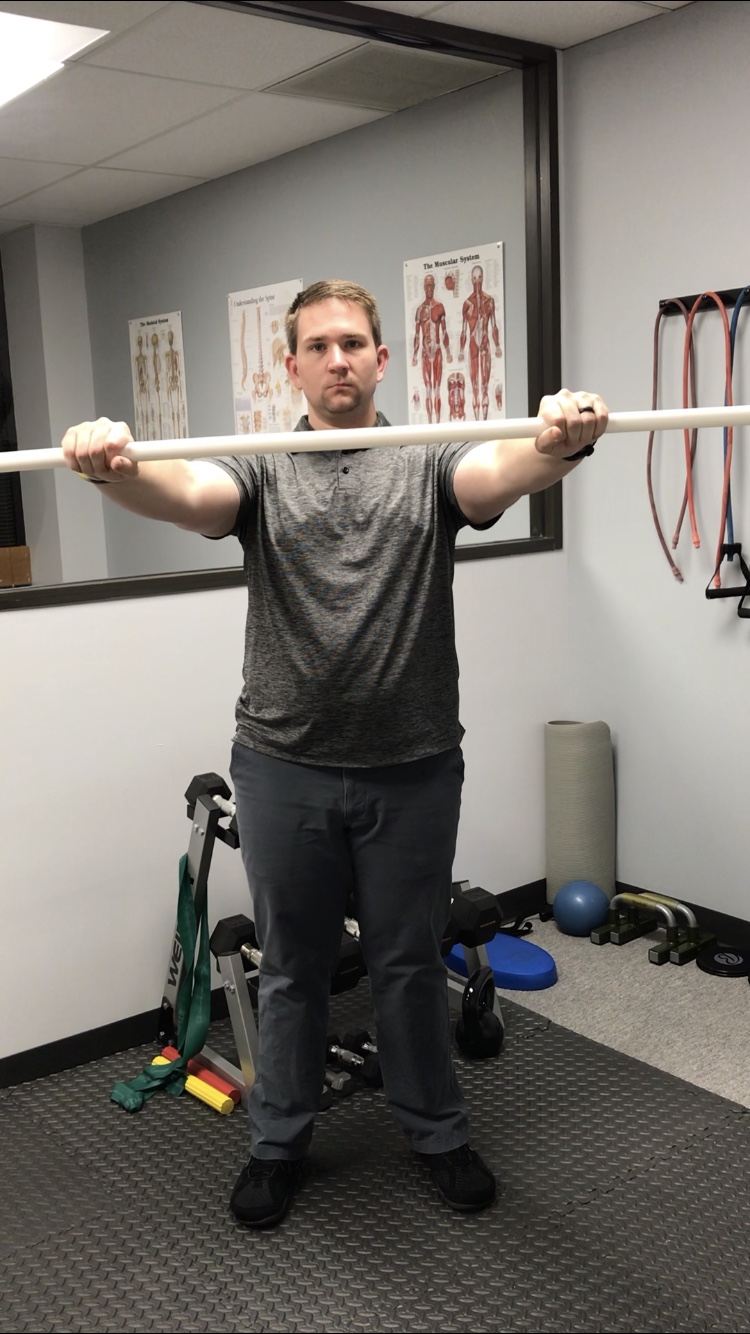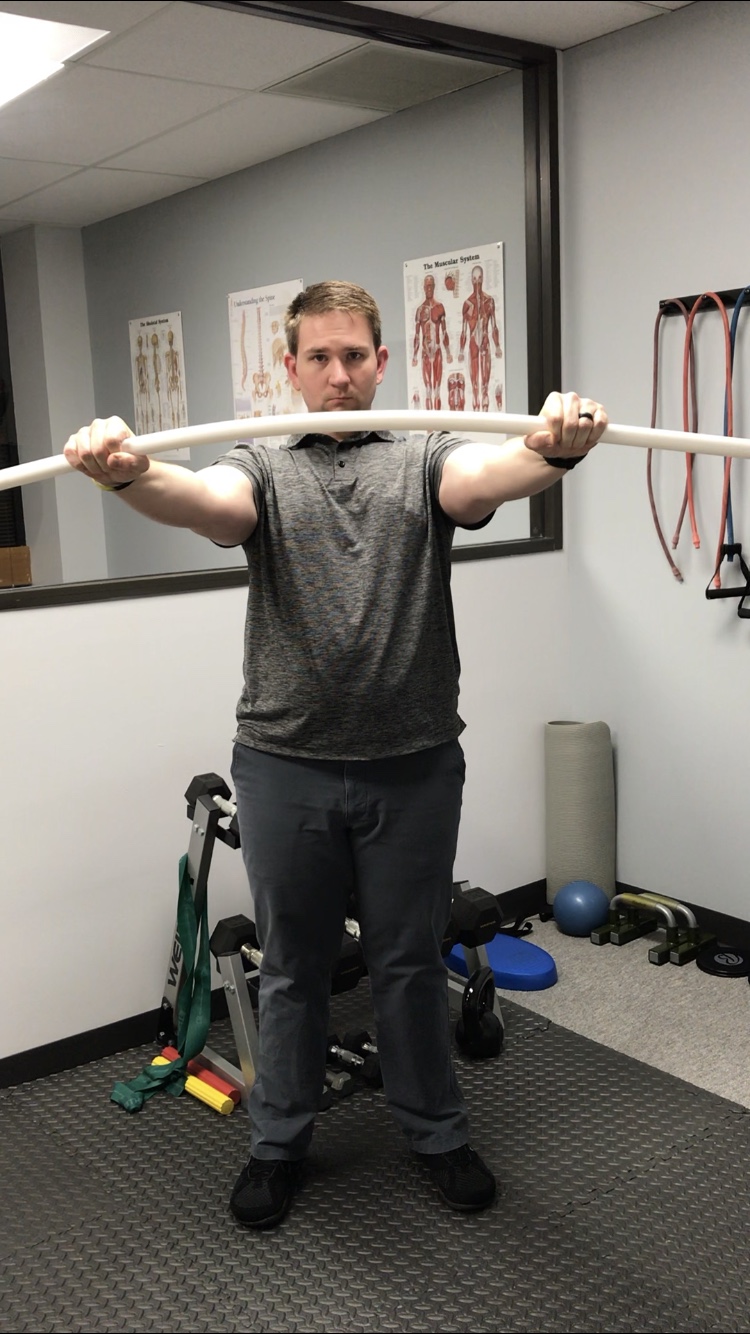Last time we went over the basics of torque and power generation, talking about the lower extremities (full article here). This time we are going to focus specifically on the upper extremities and how to lock them into place and develop torque to create power in the chest press.
The hip and shoulder are both large, mobile joints with lots of freedom of movement. This ability to move is what enables us to interact so comprehensively with our world. Moving either one of these joints requires a coordinated effort of lots of different muscles all at once, both large and small. In the shoulder, the rotator cuff is the group of muscles that is largely responsible for the fine tuning of arm positioning for activities. The rotator cuff is also responsible for stabilizing the shoulder joint and keeping it strong when applying force through the rest of the musculature from the chest and core out to the arm.
Creating torque in the shoulder is done by using the rotator cuff muscles to tighten the shoulder joint and capsule, so that there is no “slack” to overcome before you are able to apply force. The direct application of force through the shoulder translates to increased efficiency, and in most cases, also translates to more strength and a lower risk of injury.
In addition to using the rotator cuff to tighten the arm, you also want to use some of your larger muscles to keep the shoulders lined up throughout the movement. The big players here are the back muscles - Lattisimus Dorsi, Rhomboids, and Trapezius. When you squeeze the shoulder blades down and back slightly, it further accentuates the torque and resistance of the shoulder as well as keeping you in a good position to generate power.
One thing to consider with this set up is that it is scalable for the level of resistance you are working with. When you are doing a maximum effort bench press, you want to think about squeezing everything as tight as possible to generate as much power you can. When you are doing this method for a series of pushups, it is less about squeezing everything as tight as possible on every rep (you will wear yourself out prematurely) and more about getting in the right position and maintaining a constant level of tension.
Torquing the Shoulder
To generate torque in the shoulder, you almost always want to think about rotating the arm outward.
This external (away from the body) rotation is an optimal condition for the common lifts you will do, like pushups and bench press. Below, I demonstrate full internal rotation of the arm (left) and full external rotation of the arm (right).
Screw it in
Similar to the cue with the legs, you want to think of screwing the hands into the floor/bar. This means twisting towards the pinky of each hand with the shoulder/elbow, not with the hands. A good way to practice doing this and getting the feel for it is to do it standing while leaning against a wall. Keeping the hand flat against the wall, turn the elbow as much as you can towards your body. It should feel tighter in the shoulder the closer you get to the elbow being pointed at your body. This is the feeling you are looking to recreate when torquing into place while loaded.
Below I demonstrate what you are looking for in the pushup position. Elbows pointed out and shoulder not tight on the top line, elbows pointed back with tight shoulders on the bottom.
For a barbell motion, once you have established your grip on the bar, you want to think of trying to bend the bar like creating a hill between your hands. The bend should be towards your head, not towards or away from your body. You (most likely) won’t actually bend the bar, but that’s not important - what is important is that you squeeze the muscles as if you were going to bend it.
Below I demonstrate this concept with PVC so you can see the bend being created.
Down and Back
Squeeze the shoulder blades down and slightly back to start using some of the big muscles of the back.
It should feel a little bit like sticking your chest out when you do it correctly. Try to keep the shoulder blades locked down and back in this position throughout your movement.
Tighten the arms
Once you have screwed the shoulders in place, you want to tense your arm muscles and create resistance. If you think of the elbow as a spring that’s about to be compressed and then bounce back, you are adding resistance to that spring to make it stronger.
Deep breath
Take a breath in and squeeze the abdomen, like you are going to try to do a crunch or sit up motion. When you increase the pressure in the abdomen and engage the core musculature, it makes everything else stronger moving outward from the core.
Drop down
As you drop the weight down (whether that is your body toward the floor or a bar toward your chest), think of it as dropping into position to push. This first phase of the movement should be smooth and almost feel effortless if you have created the right torque and tension conditions.
As your elbows bend, try to make sure they are pulling in towards the body, usually at about a 45 degree angle when dealing with heavy loads.
Push!
Now that you have all that torque, tension, and weight in front of you, push it away from you and return to the start position.
When done right, this method of pressing should not only increase your power output but also help reduce shoulder pain associated with pressing motions. That makes the set up a win-win situation for anybody who wants to keep doing this type of exercise long term. Of course, if you are still dealing with shoulder pain and issues with your press even when doing the right set up, you should seek out help from a professional.
Leave a comment below and let us know what you think about generating more power in your chest press.
Dr. Paul Harris holds a Doctor of Chiropractic degree from Texas Chiropractic College and a Master’s of Exercise and Health Sciences from University of Houston Clear Lake. He is the owner of Delta V Chiropractic and Sports Medicine and an avid human movement specialist.













